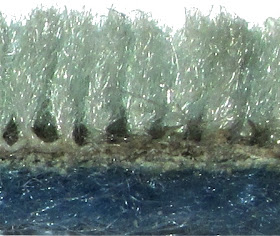Many of the products we use on a daily basis contain toxic
chemicals that escape into our homes and the environment when we use and
dispose of them. Even small amounts of chemical releases are steady, and when
combined, they make up one of the biggest sources of toxics entering
Washington’s environment.
New law
In spring 2019, the Washington Legislature passed a law that creates a new way to keep toxic chemicals out of consumer products. Ecology named the law’s implementation program Safer Products for Washington.
It directs us to work with Department of Health to:
· Choose
priority chemicals.
· Identify
products that contain these chemicals.
· Decide
whether or not to regulate those chemical-product combinations by requiring
reporting or chemical restrictions.
· Adopt
rules to implement those regulatory actions.
Our team in the Hazardous Waste and Toxics Reduction program has
been collaborating with statewide partners, diving into the research, and hearing
from stakeholders to implement this law.
Why it matters
The law has important consumer impacts—especially for sensitive populations like our children. We all benefit from the convenience and services of consumer products. But those products shouldn’t harm us, our kids, or our environment.
In Washington, millions of dollars have been spent removing toxics
from contaminated water bodies, yet some fish are still unsafe to eat and
sensitive species like our orcas continue to dwindle due, in part, to chemical
contamination.
Under Safer Products for Washington, we can make consumer products
safer. It’s the right thing to do to protect the future of Washington’s
residents and wildlife.
What’s new
In partnership with Department of Health, we released a draft report that identifies nine consumer products for further evaluation and potential rulemaking. The report release started a 45-day public comment period that ends March 2, 2020. |
| Cross-section of cut pile plush carpet and carpet backing. |
·
Carpet
and aftermarket carpet treatments containing PFAS (per- and polyfluoroalkyl
substances).
·
Vinyl
flooring and cosmetic fragrances containing phthalates.
·
Laundry
detergent, thermal paper, and food cans containing phenolic compounds.
·
Printing
inks containing PCBs (polychlorinated biphenyls).
·
Electric
and electronic equipment containing organohalogen flame retardants.
Why we’re looking at these products
We chose these consumer products because research demonstrates that they are exposing people and the environment to priority chemicals. We evaluated reports from Health and Ecology, research from Ecology’s product testing program, and peer-reviewed literature.
When the public comment period ends, we will evaluate the feedback
and finalize this list of products. Then, we’ll begin the research to identify whether
safer alternatives are available, and to determine regulatory actions, if any.


No comments:
Post a Comment
We will not post comments with links to commercial sites, so please do not include them! Thank you.
(Comments Policy)